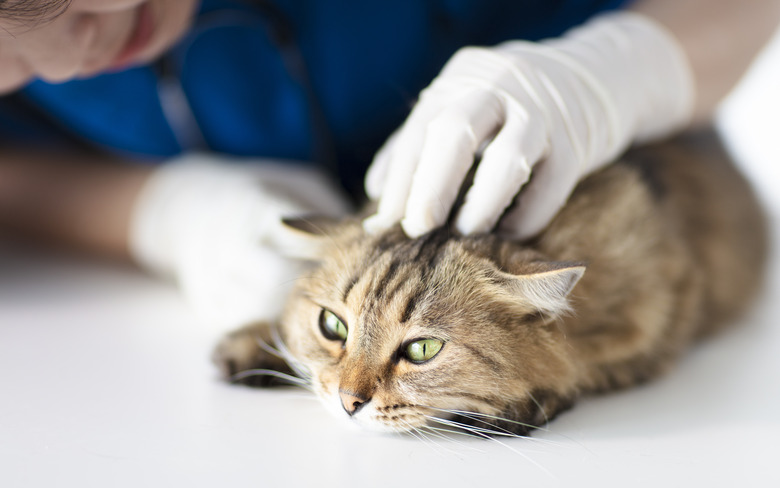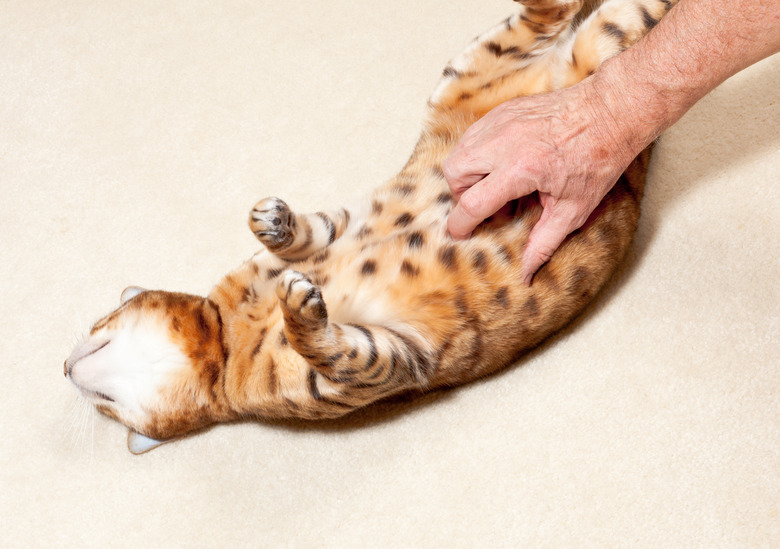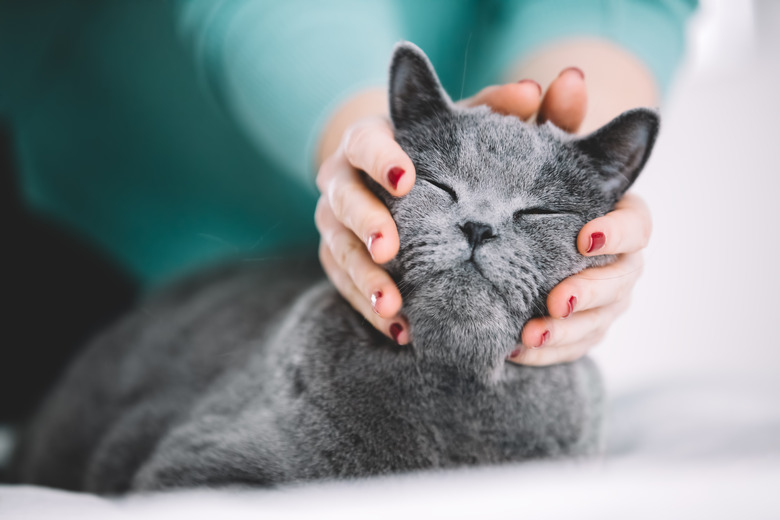What Should I Do If I Find A Lump On My Cat's Body?
All that cuddling you share with your cat is not only emotionally rewarding for both of you, but it also provides an ideal opportunity to physically examine her body for any health issues. Hence, giving your cat the thorough once-over from the tip of her tail to the tip of her nose on a regular basis allows early detection of conditions such as a broken claw, decayed tooth, skin conditions, and stiffness or soreness in her joints. But what should you do if you find a lump on your cat's body?
What to do if you find a lump on your cat
What to do if you find a lump on your cat
Along life's bumpy road, we all get our fair share of lumps; and cats do, too. After all, the average feline loves rough-and-tumble play, jumping to or from high places, and assorted acrobatics, all of which can result in trauma to the skin or tissues and can lead to swelling and lumps. But lumps and bumps can also be tumors, and one in five cats will get cancer in one form or another during their life presenting as tumors anywhere on the body. According to Cancer Quest, an initiative of the Winship Cancer Institute at the Emory University in Atlanta, cancer is the most common disease that affects cats, and many cat owners are well-aware of the potential.
Consequently, If you find a lump on your female cat's stomach, it's easy to be devastated and jump to the conclusion that it's mammary cancer. After all, statistically, 85% of mammary tumors in cats are cancerous, reports the Veterinary Medical Center at Ohio State University. But look on the bright side because 15% of lumps or tumors are, in contrast, benign. Your cat's lump might be a feline lipoma, basal cell tumor, or a fibroma.
And the good news is that when detected early enough, even a cancerous tumor on your cat's tummy can be successfully removed by a veterinary surgeon for a full recovery. It should be noted that male cats can also get mammary carcinoma, but studies show an incidence of only 1% and in predominantly those males older than 12.
Any lump you find on your cat, regardless of where it is, warrants veterinary examination, particularly if:
- A lump is large.
- A lump appears suddenly.
- A change has occurred in the size, feel, or texture of an existing lump, i.e. it's harder, less moveable, etc..
- The lump is black or purple in color.
- Your cat is bothered by the lump, wants to scratch it, and it's interfering with his daily life.
- The lump is an open sore or ulcerated.
- The lump is leaking pus or discharge.
- Your cat shows signs of illness such as lethargy, diarrhea, loss of appetite, or depression.
It's b**est to book a visit with your veterinarian as soon as possible to check it out.**
Different kinds of benign lumps and bumps
Different kinds of benign lumps and bumps
There's a world of difference between malignant or cancerous tumors and benign ones. While malignant or cancerous tumors invade surrounding tissue and spread into nearby and distant organs, benign tumors do not spread to other areas of the body and can be removed in an uncomplicated surgery your veterinarian routinely performs.
Here are some of the common lumps and bumps that are found on a cat's abdomen or chest that are benign, and although not completely without complication, are fairly harmless when addressed promptly:
Lipomas_:_ These benign tumors are harmless but need to be addressed as soon as possible because they grow quickly making them indistinguishable from the more serious infiltrative lipomas or lipsarcomas. Treatment of lipomas is surgical removal. Lipomas are composed of fatty or adipose tissue, but obesity is not a factor in their development. Genetics may play a role, though, with older, neutered, male Siamese most at risk. Lipomas are most commonly discovered on the abdomen and appear as soft, lumpy masses. Characterized by moving freely when touched, lipomas can occur in multiples and typically merge with the healthy fat tissue adjoining them. This blending into neighboring fat makes it more difficult for a vet to identify the edge of the tumor_._
Basal cell tumors: Common in older cats, particularly domestic longhair, Himalayan, and Persian, basal cell tumors can develop anywhere on the body, including the stomach. Basal cell tumors manifest as firm, solitary, often hairless lumps that may be ulcerated, and stick out from the skin's surface like stalks. These benign tumors are often dark in color, and variable in size, ranging from less than half an inch to more than 4 inches in diameter. Cysts may form, and although basal cell tumors are benign, they can grow rapidly resulting in extensive ulceration and secondary inflammation. Basal cell tumors are effectively removed by surgery.
Fibromas: Occurring in the dermal layer of the skin, fibromas are distinguished by their well-defined edges and develop commonly in dogs, but all domestic animals can develop fibromas, including cats. Typically benign, fibromas present as raised, often hairless, lumps that feel either firm and rubbery or soft and fluid-filled. Treatment is optional for benign fibromas. For example, if fibromas intefere with your cat's normal activities, or grow too large and unsightly, you may consider surgical removal to make your cat more comfortable.
Mammary cancer in cats
Mammary cancer in cats
If you find a lump on your cat's stomach, it may be indicative of mammary cancer. According to studies cited at the Veterinary Sciences division of the U.S. National Library of Medicine, the epidemiology of mammary gland tumors in cats and people is similar, with age and hormone exposure being major risk factors. As well, studies show that Siamese cats are twice as likely to develop mammary tumors, and at a younger age than other cat breeds.
Mammary cancer is particularly prevalent in unspayed females with only 9% of mammary cancers occurring in spayed female cats. Spaying your cat before her first heat is recommended to reduce the possibility of mammary cancer. When detected early, mammary tumors can be successfully removed via surgery.
Diagnosis: is it mammary cancer or a benign tumor?
Diagnosis: is it mammary cancer or a benign tumor?
To diagnose your cat's lump as malignant or benign, your vet will perform a fine needle aspiration of cells, or a biopsy, which removes a tiny portion of tissue from a tumor, for a histopathologic evaluation.
Further diagnostics such as chest X-rays and ultrasound imaging will be used in conjunction where it is confirmed that a mammary mass has spread to the lymph nodes.
If mammary cancer is definitively diagnosed, a mastectomy is performed to remove one or both chains of the patient's nipples, mammary glands, and underlying tissue. Survival rates are good, especially if the tumor is smaller than a one-inch diameter.
Always check with your veterinarian before changing your pet's diet, medication, or physical activity routines. This information is not a substitute for a vet's opinion.
References
- Rau Animal Hospital: Four Types of Cat Cancer and Their Symptoms
- The People's Dispensary for Sick Animals: Tumors and Lumps
- VCA Hospitals: Mammary Tumors in Cats
- Cornell University College of Veterinary Medicine Feline Health Center
- U.S. National Library of Medicine Veterinary Sciences: Cats, Cancer and Comparative Oncology
- Cancer Quest: Cancer in Domesticated Animals
- The Ohio State University Veterinary Center: Feline Mammary Tumors
- U.S. National Library of Medicine Veterinary Sciences: Clinical Characteristics of Mammary Carcinoma in Male Cats.



